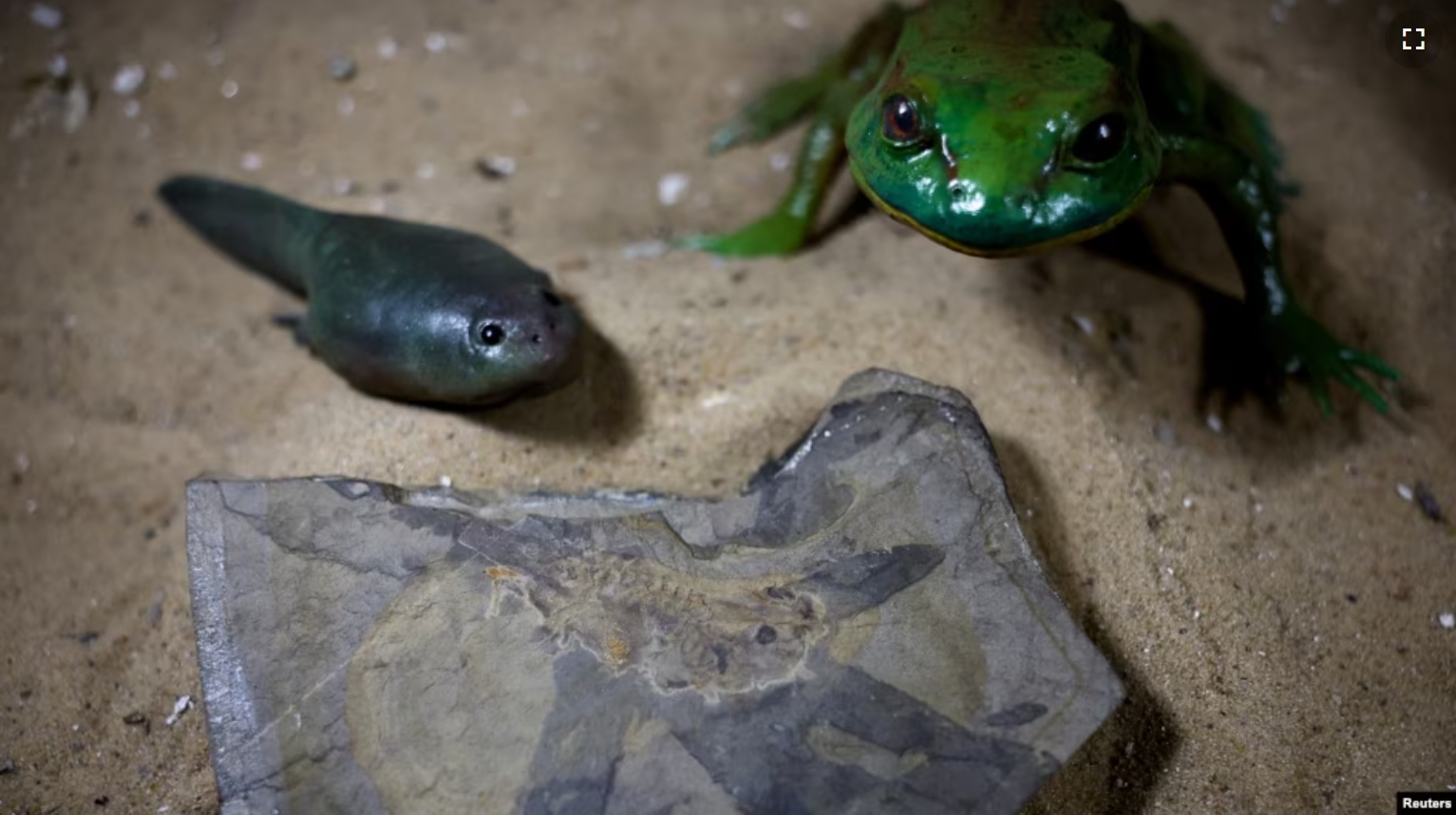Scientists in Argentina have discovered the oldest-known remains of the tadpole. The animal belonged to a large frog species that lived alongside dinosaurs about 161 million years ago.
The researchers said the 16-centimeter-long tadpole died during the larval period, or stage, of frog development. The discovery is providing new information about the development of frogs and toads.
The remains suggest tadpoles today are largely unchanged from their ancestors in the ancient time called the Jurassic period. The oldest-known frog remains date back even further, though no older tadpole fossils have been found.

The remains are in good condition. In fact, researchers say, the ancient tadpole has some soft tissues rarely seen in fossils. The tadpole’s eyes and nerves, for example, appear as dark markings in the fossil.
Fossil hunters found the tadpole in 2020, during a dig for dinosaur remains on a ranch in the southern province of Santa Cruz. The fossil includes the tadpole’s head and most of its body.
Frogs have a two-stage life cycle, with the tadpole larva developing into the adult form. This tadpole was in the late stages of development. Adults of this species are a similar length as the tadpole, the researchers said.
“It’s not only the oldest tadpole in the world and amazingly preserved, but it also tells us about the size of one of the few frog species known from that time,” said biologist Mariana Chuliver of Fundación Azara-Universidad Maimónides.
Chuliver was the lead writer of the study that appeared recently in the scientific publication Nature.
Chuliver said the soft tissue remains are important because they permit researchers to “know the diet and lifestyle of these organisms.”
The remains, Chuliver added, show that the form and structure of tadpoles have “remained almost unchanged over the last 160 million years.”
I’m John Russell.
Miguel Lo Bianco reported on this story for Reuters. John Russell adapted it for VOA Learning English.
_______________________________________________
Words in This Story
species – n. a class of animals having common attributes and designated by a common name
fossil – n. the remains of an organism of past geologic ages that has been preserved in the earth’s crust
preserve – v. to keep intact or free from decay
